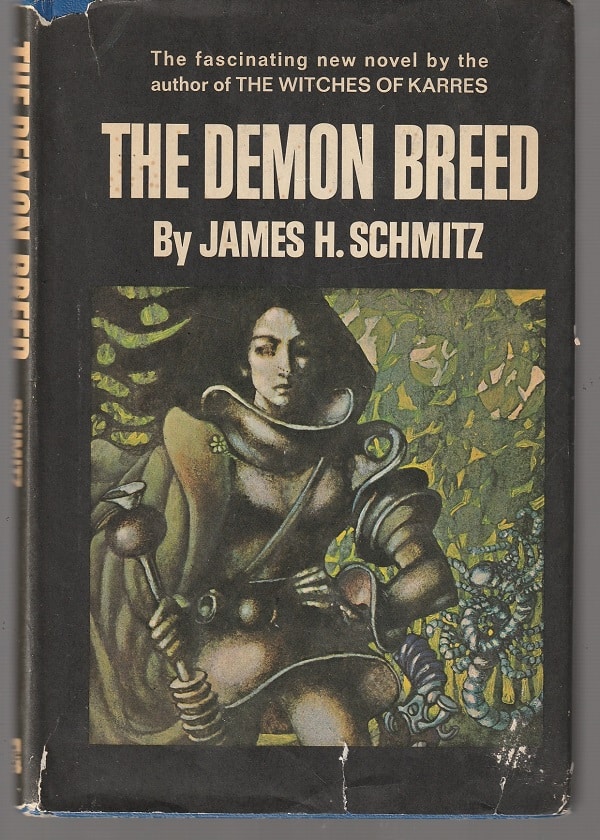The Demon Breed, published in 1968 by James H. Schmitz, has been described as the first or one of the first examples of feminist science fiction because it is centered around a young, highly competent woman named Nile Etland who cleverly saves her planet from a brutal alien species, the Parahuans.
It is somewhat astonishing that Schmitz could write his story the way he did because, except at the very end in a very minor way, Nile’s femaleness is beside the point in the story.
This is a book that was written more than half a century ago, at a time when, throughout most of the world, women weren’t soldiers or cops or firefighters. They weren’t, except with very few exceptions, mayors or governors or senators. They were second-class citizens, expected to fill certain spots, such as mother, nurse and teacher, and leave the heavy lifting to the men.

And, yet, in The Demon Breed, Schmitz has Nile move through the story like any swashbuckling male hero, not only of science fiction but of all adventure stories.
Whoever wrote the dust jacket copy felt the need to describe her as “a beautiful young research scientist,” but, as far as I recall, there is no mention of her looks, beautiful or otherwise.
On more than one occasion, I had the thought that Schmitz wouldn’t have had to do much rewriting if he’d decided to change Nile into a man — just substitute “him” for “her” and so on. There is nothing “girly” or “womanly” in anything she does that would have to be made “manly.”
Countercultural
So, The Demon Breed is groundbreaking, but Schmitz doesn’t go out of his way to make a point. Nile is the hero of the story. She just happens to be a female.
He’s not writing, it seems, to make a point. Or, better put, the point he’s making is simply that here’s a woman who is having an adventure and saving her world of Nandy-Cline from cruel aliens. No one in the novel expresses surprise that a woman is able to do the saving.
That is really countercultural for 1968.
But, because Schmitz isn’t making a big point of it, his novel is ultimately just another science fiction book, more clever than some and more interesting in a minor way. Nile’s place at the center of the story is more of a historical footnote than anything.
Chiefs of the Dark Ships
The one exception comes at the very end of The Demon Breed when Nile’s femaleness is mentioned. It’s in the last chapter when the shadowy Chiefs of the Dark Ships who have watched what happened on Nandy-Cline are analyzing why humans were able to triumph over the cruel invaders.
One of them reports that the Parahuan survivors were astonished at how “monstrously more dangerous” the humans were than had been assumed.
The impression was strengthened by the fact that the Guardian Etland appeared to be a young female. The Parahuans are aware that in the human species as in many others it is the male who is by biological and psychic endowment as well as by tradition the fighter. What a fully mature male Tuvela might have done to them in the circumstances staggered their imagination.
That’s what the Chiefs of the Dark Ships and the Parahuans came to think.
But the humans in the story? They show no surprise at what “a young female” could do.
Patrick T. Reardon
1.16.24
Written by : Patrick T. Reardon
For more than three decades Patrick T. Reardon was an urban affairs writer, a feature writer, a columnist, and an editor for the Chicago Tribune. In 2000 he was one of a team of 50 staff members who won a Pulitzer Prize for explanatory reporting. Now a freelance writer and poet, he has contributed chapters to several books and is the author of Faith Stripped to Its Essence. His website is https://patricktreardon.com/.
